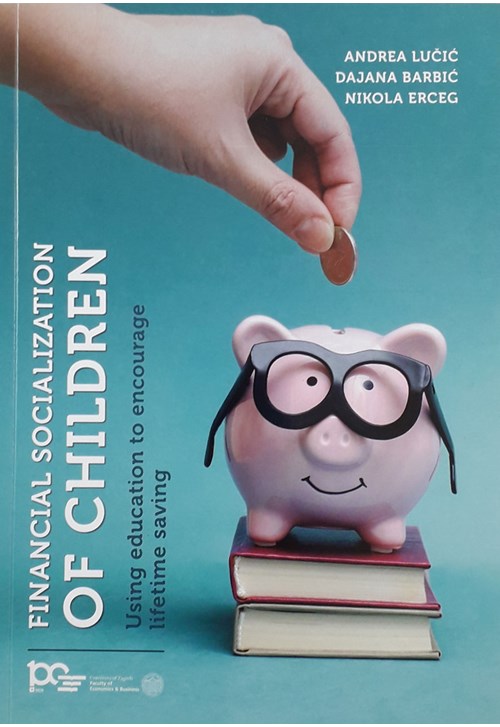{{listOfProducts[lastIndexOfRelated].Name}}
Autor/i: {{listOfProducts[lastIndexOfRelated].ShortDescription}}
{{listOfProducts[lastIndexOfRelated].SinglePriceToPay_print}}
U cijenu je uključen PDV
Godina izdanja: 2020.Jezik izdanja: engleskiBroj stranica: 140Uvez: mekiISBN: 978-953-346-125-0To educate children to save by influencing their saving attitudes and behavior is the first step in the process of responsible financial consumption behavior among adults. Knowing that poor financial choices can have a long-lasting effect on the well-being of both individuals and the society as a whole, and that saving is crucial for long-term financial stability, it has become very important for children to be educated in saving planning and rational spending, as early as possible. This book focuses on financial socialization, financial education, financial behavior and saving habits of children aged 10-15, also known as late childhood. It also examines the efficiency of traditional financial education and behavioral intervention within the Mala akademija financija project (Little academy of finance). The behavioral intervention was developed based on three psychological phenomena: self-persuasion, goal setting and the development of implementation intentions. The data was collected in two waves: two months prior to the intervention and three months after the intervention. This experimental project was conducted on the sample A total of 715 pupils (471 fully completed the pre and post experimental questionnaires) from 30 primary schools in Croatia participated in the research. The findings reveal that the majority of children engage in saving and that most of them receive allowance. The parents have been confirmed as important agents of the children’s financial socialization. The study has established that self-efficacy is the most important predictor of saving intentions and responsible financial behavior. Results suggest statistically significant differences between experimental and control schools for all four variables in different time frames. However, there were no significant differences between the two types of experimental schools. These topics are discussed in the theoretical parts of the book (chapters 1, 2, 3 and 4), as well as on the empirical level, through primary microdata analysis (chapters 5 and 6)


